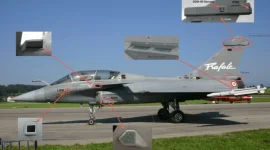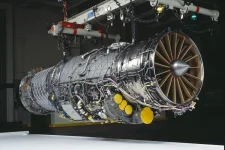- Views: 5K
- Replies: 23
The Indian Air Force (IAF) has significantly enhanced the air combat capabilities of its Sukhoi Su-30MKI fighter jets by equipping them with advanced long-range missiles.
Since 2019, the integration of the Israeli I-Derby ER and the indigenous Astra beyond-visual-range air-to-air missiles (BVRAAMs) has aimed to address operational gaps and counter the missile technology previously fielded by the Pakistan Air Force (PAF), particularly its American-made AMRAAM missiles.
These upgrades represent a major step in maintaining India's air superiority in the region.
The need for these improvements was starkly highlighted during aerial combat on February 27, 2019, following India's Balakot airstrike. In that engagement, PAF F-16 jets armed with AIM-120 AMRAAM missiles, which possess a range estimated between 100 and 120 kilometres, were able to target IAF Su-30MKIs from distances beyond the effective reach of the Sukhois' then-primary R-77 missiles (approximately 80 km range).
While the IAF pilots successfully evaded the incoming PAF missiles, their own weapons lacked the range to effectively engage the adversaries, exposing a critical need for longer-range air-to-air capabilities.
Recognising this disparity, the IAF initiated a focused program to upgrade its Su-30MKI fleet, which comprises over 260 aircraft and forms the core of India's fighter strength. A key component of this upgrade involved incorporating the I-Derby ER missile, developed by Israel's Rafael Advanced Defence Systems, a globally recognized defence technology company.
Announced in 2019, the I-Derby ER offers an engagement range of about 100 kilometres. It features advanced technologies, including a dual-pulse rocket motor that provides extra thrust during the final phase of flight for improved accuracy and a sophisticated active radar seeker allowing pilots to "fire-and-forget" the missile beyond visual range.
A particularly significant feature of the I-Derby ER is its ability to engage targets in any direction relative to the launching aircraft, including threats approaching from the rear (aft hemisphere). This "full-sphere" capability provides pilots with crucial defensive and offensive options, addressing limitations observed in the 2019 skirmish where IAF jets were primarily forced into defensive manoeuvres.
The integration process saw the I-Derby ER replacing the older R-77 missiles across Su-30MKI squadrons starting around 2021-2022.
Alongside the Israeli system, the IAF has also inducted the domestically developed Astra Mk-1 BVRAAM. Designed and developed by India's Defence Research and Development Organisation (DRDO), the Astra Mk-1 boasts a range of approximately 110 kilometres.
Following successful trials in late 2019, the missile began integration onto the Su-30MKI platform in 2020. Reports indicated widespread operational deployment across frontline squadrons by late 2023, with full fleet integration anticipated by early 2024.
Like the I-Derby ER, the Astra Mk-1 uses active radar homing for precision targeting.
The introduction of the I-Derby ER (100 km range) and Astra Mk-1 (110 km range) has effectively neutralised the range advantage previously held by the PAF's AIM-120C AMRAAM missiles (100-120 km range).
While Pakistan has also sought to upgrade its arsenal, notably with the longer-range PL-15 missile (estimated 145 km export range) for its JF-17 Block III fighters, the IAF's upgrades restore parity.
Furthermore, India is actively developing the Astra Mk-2, expected to offer significantly extended range, promising a future edge.
Beyond closing the range gap, the new missiles offer distinct tactical benefits. The I-Derby ER's all-round engagement capability enhances survivability and offensive options in complex aerial combat.
The Astra missile is also noted for features like its two-way data link, potentially making it more resistant to electronic jamming techniques, which were reportedly employed during the 2019 confrontation.
Together, these missile upgrades significantly bolster the IAF Su-30MKI's lethality and survivability in the modern air combat environment.


